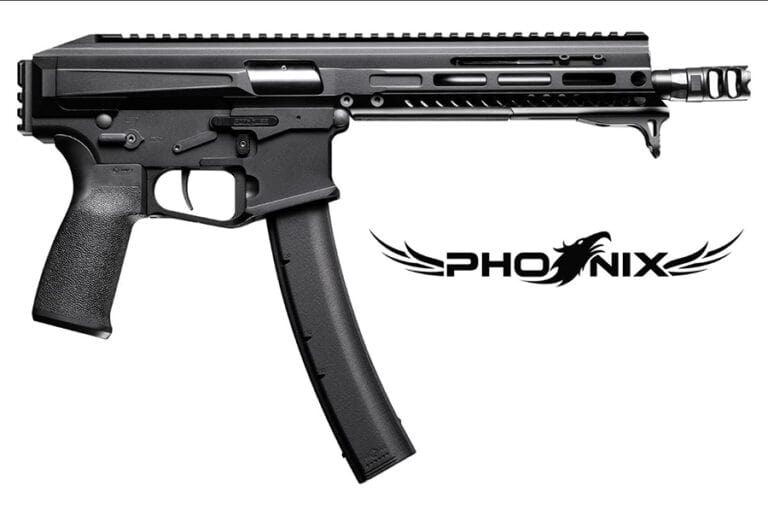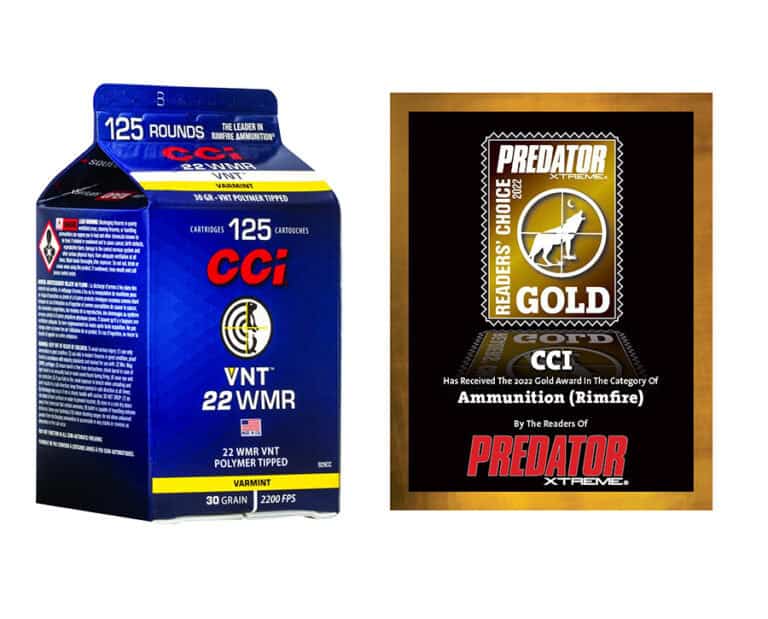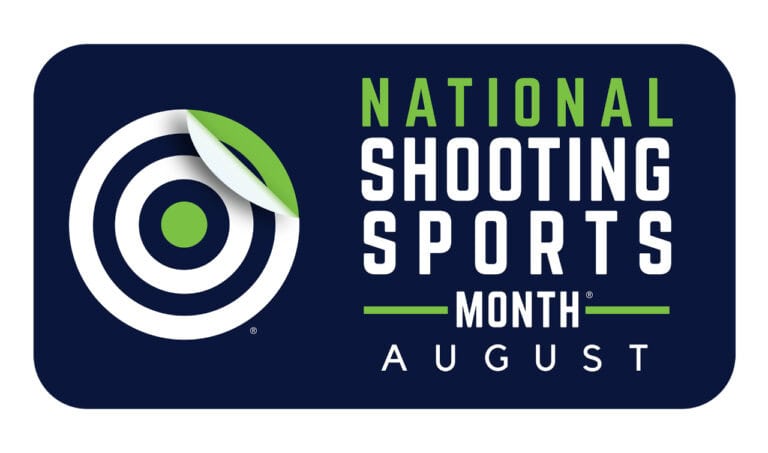TAG Precision—American-made RMR Plate for Kimber
For users of optics-ready Kimber 1911 and 2K11 pistols, TAG Precision has announced…
For users of optics-ready Kimber 1911 and 2K11 pistols, TAG Precision has announced…
Fountain Valley, CA—SureFire, LLC, manufacturer of the world’s finest—and most innovative—illumination tools and…
Shinenyx—creators of a cutting-edge fusion of digital night vision and thermal imaging technology—has…
The Mod-Navy Qual I’ve been doing this qual (or drill, or whatever the current nom…
• Built for road trips and off-road use• Manual transmission equipped• Wrapped in MultiCam Arctic…
I designed the Button Man to give shooters a low-round-count, low-light-engagement drill that involved both…
Every Day Carry (EDC) gear essentials and the mindset behind them
Our world is shifting- changing and burning in new and unprecedented ways. The past few months alone we have seen the tragic attacks in Paris and San Bernardino. All of a sudden, armed citizens are watching the face of potential conflict rapidly changing- a six-shot revolver simply doesn’t cut it anymore, and many gun owners have begun to carry intermediate- or duty-size handguns as their daily conceal carry gun.
I’m writing this the evening of the San Bernardino mass shooting, which increasingly looks to be the doing of ISIS-style terrorists, and although the facts are still coming out, I have a bad feeling this will not be the last attack we see on American soil. Watching the attacks unfold on tv in the locker room of my local gym definitely made my blood boil. And so in this changing and ever-shifting world, the battlefield has finally reached our back yards.
The armed citizen is more than a gun owner. A gun owner possesses a firearm. An armed citizen knows how to use that firearm, and the mentality that not only resulted in our Second Amendment rights, but also the mindset to defend those in danger. The sheepdogs, as is said so much these days. With that definition in mind, an armed citizen requires more than a gun.
First off, let’s clarify what Every Day Carry (referred to as EDC from here on) is. It means you carry it everywhere you go. Everywhere. All the time. No exceptions.
A very close friend of mine recently related a story to me that demonstrates the importance of treating your EDC seriously. Keep in mind that my friend, who we will call Juan, is a trained shooter, has taken numerous classes, and has the most critical element down- mindset. So anyways, Juan went into a glass store to get, well, glass (what else do you get at a glass store?), at a small, by-the-way glass shop, in a not-suspicious part of town. Having been through a long day (Juan is a home remodeling contractor; need some new touches on your house- call Juan-800… Okay this is getting out of hand), he left his Glock 19 in the car, stowed in his lockbox, and simply had his pocket .380 backup gun (for more on how I feel about pocket .380 pistols, check out this article I wrote a while back) in his pocket. And on this fine winters day, in a small glass shop, Juan came closer to pulling a gun than he ever had before in his life. Out of the four people in the store, a crazed individual was in the shop threatening two of the women there, getting in their face, grabbing items out of their hands and causing quite a scene. While the situation ended up being resolved peacefully, it did get to the point where in the midst of the commotion, Juan had his hand on his firearm (in the pocket) and had a plan of attack. He told me that the biggest takeaways from the situation were:
A. He did not have his fighting pistol on him, the gun he trains with at the range and practices with. He had a pocket .380 and recalled feeling woefully inadequate for a serious combat engagement, and although he can shoot his pocket gun somewhat decently, he felt unprepared.
B. A potentially life-or-death situation could happen anytime, anywhere, in any manner, and in places you least expect it. And he was one step behind the situation by leaving his fighting pistol behind.
I tell that story to underscore the importance of EDC being EVERY DAY CARRY! The items listed below should travel with you everywhere, all the time. Like your phone, they shouldn’t leave your side. And your EDC gun should be what you train with. In some of the conceal-carry classes I teach, I have had students bring their full size guns to the class, then let it slip they carry a, wait for it, micro .380 each and every day. When I made them take the class with their pocket gun, they came back the next week with a new carry setup. Winning!
Alright, let’s keep this simple:
Honorable mention, and a lot of this depends on your clothing, goes to a CAT-T tourniquet.
Firearm:
First and foremost, your firearm needs to be utterly reliable. I prefer a gun that sports reliability, high capacity, in a controllable and ergonomic platform. The current EDC firearm for me is a Glock 17, which I can somehow conceal carry. Other firearms that fit my criteria would be any 9mm Glock, Smith & Wesson M&P, or Sig Sauer P320. While there are other great firearms out there, these ones are the guns I would bet my life on. There are endless debates about which gun is the greatest, but remember, if you wouldn’t bet your life on it, or wouldn’t train with it due to it being uncomfortable, it isn’t something for you to carry.
My setup:

Light:
Half of our lifetime happens in the dark. The power could go out, or you could just be dealing with a dark corner of a building. Best to be ready for it. Lights can be either handheld, weapon-mounted, or you could carry one of each. While there are advantages and disadvantages to each, if you had to choose just one, I would go with a handheld light. While I don’t find myself drawing my conceal-carry pistol with the intent to use it on a daily basis, I do use a light on a daily basis. Dropped keys, looking for things, checking on pipes, in cabinets- I’ve used my flashlight quite a bit. Additionally, a well-built handheld light works extremely well as a blunt-force weapon at close ranges, or as a backup weapon if your gun is out of the fight. I am currently using the Streamlight Protac 2AA, which has a slightly longer profile that I like, since I consider it a part of my fighting arsenal.
Should your light be second-coming-of-Christ bright or more on the dim side to keep your vision intact? Plenty of arguments for both sides there. The Protac 2AA has both bright (155 lumens) and dim (11 lumens) settings, and most lights have this option. I really like this feature as it gives me the flexibility to blind my younger brother from time to time, or search my car for dropped keys or extra bullets without destroying my night vision.
A weapon-mounted light is much easier to use in low-light shooting situations, since you can leave both hands on the gun. However, getting your gun out to help your coworker find which wire went weird under his desk is generally frowned upon. So if you can only have one light, go with a handheld light. Good training can teach you how to properly use the light in conjunction with your pistol. Extra cash? Throw a light on your firearm for added versatility.

Knife:
For opening boxes or people, it should be common sense- a quality knife should be carried daily. Everywhere. In addition to being a terrifying weapon (I’d rather get in a gunfight than a knife fight), it can be useful for a wide variety of other armed-citizen activities: cutting seat belts to help someone in a car wreck, opening ammo boxes at the range, or slicing up anything that needs slicing. I am currently running a Columbia River Knife & Tool M21-04, a pocket sword of sorts. It has held up well, and having carried -and lost- a wide variety of knives in the past, ranging from beater $15 knives to expensive brand-name blades, the CRKT has been a winner in my book. It is a good blend of work-knife (aka opening boxes at the range, rough job) and people-fillet-knife. And it doesn’t cost an arm and a leg- one of my friends carries a $900 knife in his right pocket and an $1100 knife in his left pocket. Maybe one day, after I win the lottery.

Extra Magazine:
This one should be easy to explain- it’s another roll of quarters to play the game of life and death. The hardest part of carrying an extra magazine is how to carry it. At the very minimum, throw an extra magazine in your pocket. Over time though, a dedicated mag carrier will prove it’s usefulness, plus they are faster to reload from. I’m currently running a Tactical Supply Urban Mag Carrier that retains a single magazine sideways, which is nice because it doesn’t stab my fat roll. That is just one of many, many options. Soon I will be testing a variety of mag carriers, some that use magnets, some that use pocket clips, some that are belt-mounted… So personal preference is king here. If your gun allows it, you can rock a higher capacity mag than your carry gun may want. Translation: if you carry a Glock 19, your backup mag should be a Glock 17 mag. Two extra rounds may not seem like much, but it’s two more shots to have if you need them. Once you start carrying an extra magazine, practice your reloads from however you carry your backup mag.

CAT-T Tourniquet
There are several tourniquet options out there, but the CAT-T combines light weight with strong durability, reliability, and ease of use. This is something that will be on my person from now on- I have always carried at CAT-T in my car, but now I will be carrying one on my person. Whether it is for self-aid or to help someone who is hurt in an attack or accident, a tourniquet should be the first line of defense against injuries to the limbs and especially against arterial injuries. I am still looking for an efficient carry solution for a tourniquet. For now, my CAT-T will live in my left cargo pocket. One of the dangerous men who trained me recently took a vacation to Hawaii, and put a tourniquet in his beach bag in case of shark attack. He didn’t have to use it and you might laugh, but again, you never know when tragedy will strike and it’s better to have something and not need it than need it and not have it.

In our changing and shifting world, we see evil accelerating. Burke once said, “All that is necessary for evil to triumph is for good men to do nothing.” And when seconds count, law enforcement is minutes away. When terror strikes on our homeland, the armed citizen is the first line of defense. Always be ready, always be vigilant. The best defense against evil men is good men and women who are skilled at violence. So don’t just get the gear and feel cool- train, and train HARD with every piece of equipment you have. Remember, you are the weapon, all else is an accessory, a tool.
There’s your basics of EDC, now go out and live it. This wasn’t an exhaustive list, but it’s the basics of what you should have on your person any time you are awake and dressed. And when you aren’t dressed or awake, they should be within arm’s reach. Anything else you take with you daily, whether it be a rifle, full kit, or a micro-tank, can be stored in your vehicle, or in a back pack (probably not the micro-tank), but for your true EDC, this list will do. Stay vigilant, the people around you might have their lives depending on it.

* The views and opinions expressed on this web site are solely those of the original authors and contributors. These views and opinions do not necessarily represent those of Guns & Tactics Magazine,
the administrative staff, and/or any/all contributors to this site.
Judah is a firearms instructor and competitive shooter. In addition to writing gear reviews, he covers tactics and mindset for the shooter looking to be ready for anything. When he isn’t shooting, he is a certified personal trainer and an avid outdoors enthusiast.
Continued from original article… [dcs_img_right framed=”black” w=”176″ h=”176″] http://gunsandtactics.wpengine.com/wp-content/uploads/2012/05/DiehlDefense.png [/dcs_img_right] Diehl Defense will be bringing a portfolio of its products, including ammunition, missiles, an air defense system, and…

POF-USA is proud to announce their all new 9mm subgun, the Phoenix. Built from the ground up, the Phoenix is a smooth shooting 9mm.

For the sixth year in a row the readers of Predator Xtreme awarded CCI the 2022 Gold Award in the category of Rimfire Ammunition.

August is National Shooting Sports Month®, a time to celebrate recreational sport shooting and encourage others to visit a shooting range—and shoot.
The RISE ICONIC felt really nice in the test units. A smooth first stage, clean break and then a crisp reset.
Steve Coulston Gives an Update on the Groundbreaking Avalanche Charging Handle. A while back I had the opportunity to get my hands on a series of prototype charging…
© 2025 UN12 Magazine
© 2025 UN12 Magazine
Wait! Don’t forget to